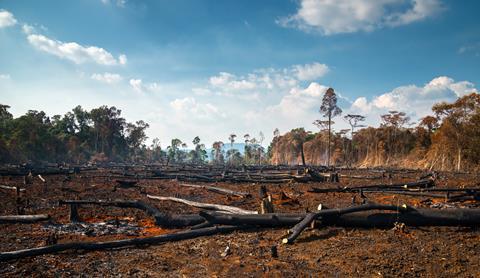In November, when COP26 takes place in Glasgow, the eyes of the world will be looking at what progress the UK has made towards delivering sustainability targets to support net zero and the tackling of climate change.

Savills has identified 10 drivers of change we can expect to hear more about this year.
1. TCFD and climate transparency
A raft of sustainability disclosure requirements is coming and The Taskforce on Climate-related Financial Disclosures (TCFD) is leading the way. Since January, disclosure has been mandatory in the UK. This will help to improve the availability, consistency and reliability of information, ultimately helping to tackle climate change.
2. Net zero and climate positivity
In 2020, corporate commitments to net zero came thick and fast and now the race is on to understand what this might mean for businesses. This includes how best to achieve an overall balance between emissions produced and emissions taken out of the atmosphere before the deadline of 2050, or in some cases, before 2030.
However, there are some who don’t see this as going far enough. Instead, they are focusing on ‘climate positivity’. Rather than settling for neutral, they are going beyond net zero emissions to create environmental benefit.
3. Carbon insetting
For many, carbon insetting could provide the answer to achieving net zero. This is essentially an investment in emission reduction projects within an organisation’s own supply chain, and in contrast to carbon-offsetting, this investment can be retained within a company’s value chain.

4. Rural performance review
This offers the opportunity for rural landowners to holistically consider whole estate performance, moving away from overly simplistic and siloed approaches, which might not adequately consider the interconnected nature of both natural and social assets.
Underpinned by natural capital analysis and sustainability principles, it uses GIS and survey information to generate key ecosystem service scores, providing a versatile yet consistent framework for reporting. It will also enable landowners and managers to identify opportunities for biodiversity net gain, which could offer significant new income streams.
5. Circular economy
A number of new approaches to the procurement and disposal of goods that can prevent materials entering the waste stream and reduce carbon emissions associated with their production, handling and disposal are set to become mainstream.
6. Generation Z
The generation born between 1996 and 2016 are environmentally motivated and are pushing the climate change agenda. Given that they are set to overtake millennials in spending power by 2031, their views and values will drive more sustainably motivated consumer trends, employment choices and investment decisions.
7. 360 degree brands
Social media has made it almost impossible for brands to get away with greenwashing. Organisations that boast progressive sustainability values but are found to be wanting will receive public backlash. Consequently, 360 degree brands consider everything from ethics to environmental impact in order to meet increasingly high customer expectations.
8. Green finance
ESG investing, green exchanges, green pension options and choices for conscientious institutional investors are becoming increasingly popular, alongside rising financial literacy. There is an increasing pressure to decarbonise balance sheets, including clear timelines for restrictions and the phasing out of financing for fossil fuels.
9. WELL Buildings
When lockdown is lifted, the real estate sector will have a significant role in providing occupiers not just with reassurance, but also with tangible benefits to individuals’ mental and physical health and wellbeing. The WELL standard is a performance-based system optimised for commercial and residential buildings, with the option to expand this to look at masterplan-wide initiatives.
10. Biodiversity
As we diminish biodiversity and destroy natural habitats by cutting down forests and building more infrastructure, we increase the risk of pandemics such as Covid-19, which is leading to an accelerated transformation in the way investors deal with the loss of biodiversity.
The UN Biodiversity Conference due to take place in Kunming, China, this May is set to deliver a global framework to help tackle this risk and could be biodiversity’s watershed equivalent of the Paris Climate Agreement.
Tanya Broadfield is senior sustainability consultant at Savills





























No comments yet